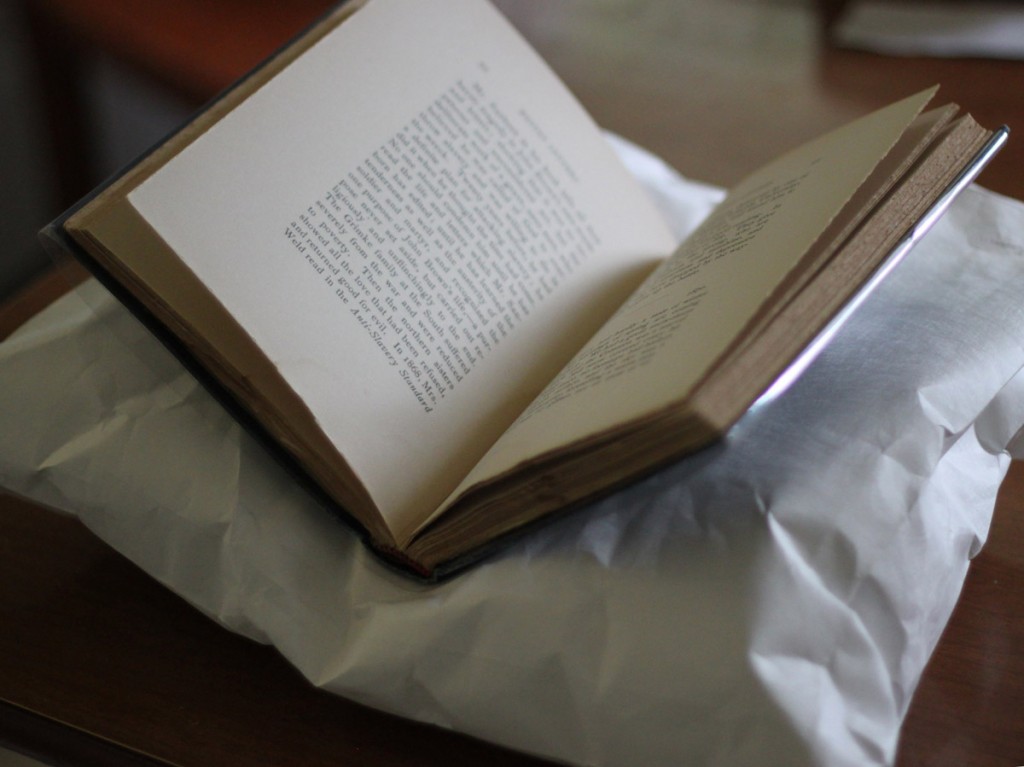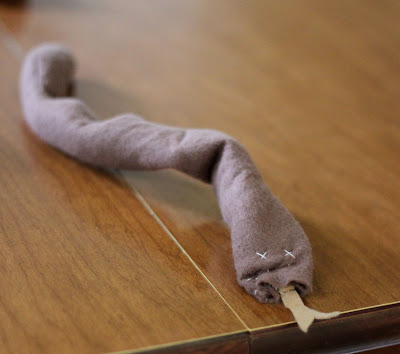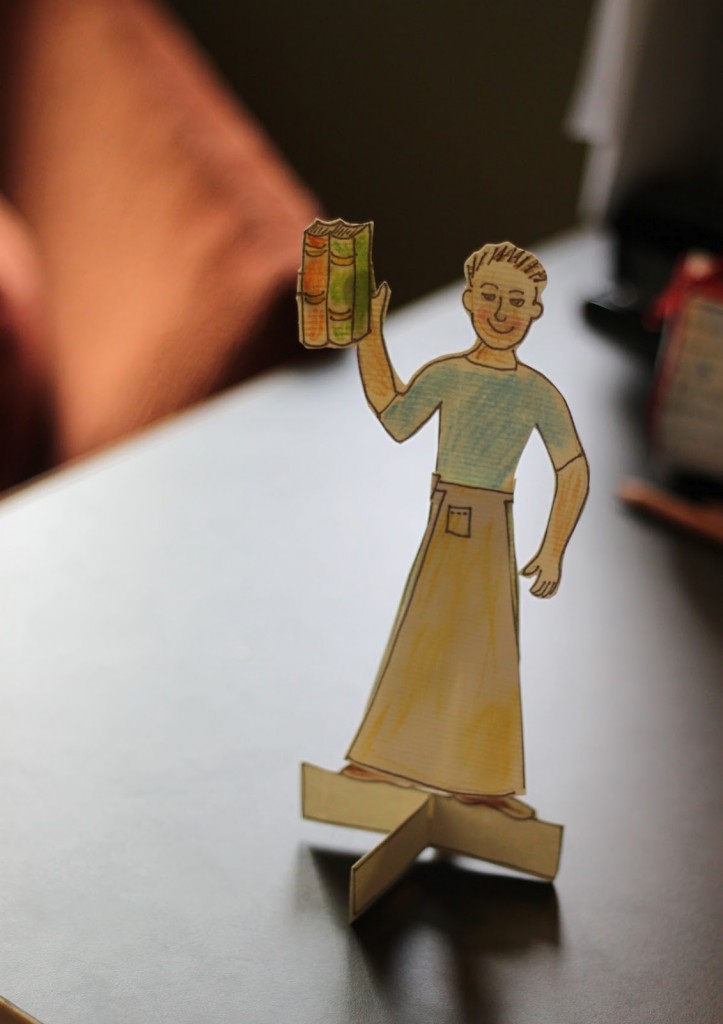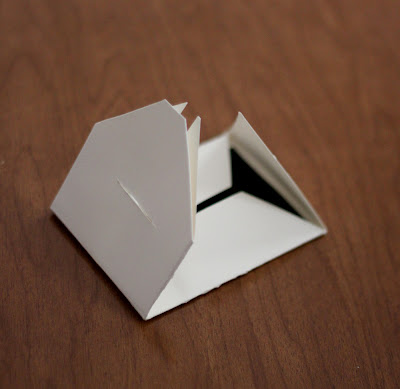Riding the wave of our recent James Russell Wiggins lecture’s Franklin-iana and the American Library Association’s 2014 Preservation Week: Pass it On (which takes place April 27-May 4, 2014), we found ourselves struck by the Benjamin Franklin quotation, “An ounce of preservation is worth a pound of cure.” Although Franklin was speaking about fire safety (and the quote has been used in the context of health), we used it as a charge to reflect on general collection health and maintenance.

One of the goals of ALA’s Preservation Week is how we can preserve personal and shared collections. Several weeks ago, curator of graphic arts Lauren Hewes had an eye-opening experience in the flooded basement of a descendent of a photographer (photographs of the subsequent conservation work were posted on the AAS Instagram account). In this case, minimal preservation steps would have gone a long way. Similarly, two years ago while in a Preservation Management in Libraries and Archives class with Rachel Onuf at Simmons College, I was assigned a final project to create a preservation education program for the public. The forum I selected was to produce a blog to showcase selected preservation needs – a blog created for those interested in preservation of library materials on a shoe-string budget. The project was called “Simple Preservation Matters” because it gathered together the most straightforward preservation strategies and suggested that carrying them out would have value for a collection.

The project started out with a budget – of eighteen dollars and eighteen days. The goal was to create eighteen resourceful ways of dealing with the issues of preservation, including housing, education, proper display, use and handling, acquisition of suitable housing, minor book treatments, and disaster preparedness. The purpose of the project was two-fold: first to create a resource for those interested in the preservation of library materials which could lead them in the right direction, but also to display how achievable the ideas are.

A few points about what this project was not. This blog did not attempt, or suggest, that professionals shouldn’t be called in when needed. It did not encourage conservation, but rather attempts to filter some of the larger preservation goals (environmental monitoring, security, minor building surveying/fixing, housing) into manageable pieces. This site was not intended to be a resource for collections conservators – nor was it to encourage librarians or well-meaning individuals to think they are collections conservators or technicians. Instead it was a forum for creativity, for ideas, for humor, and to show doable best practices in action.
Some of the activities were for the DIY crowd (making your own book cradle and making your own book snake), while others were for a younger audience and advocated proper book handling and, if creativity allowed, making preservation paper dolls with Tyvek suits. Still others were on the lighter/informational side and advocated for proper collection transport (à la “my other car is a book truck” bumper sticker).
 The blog was created to lead those interested in preservation to the authoritative resources on preservation management (see footnote). Usually the most inexpensive strategies make a difference in the protection of a collection. This included recommendations from the NEDCC on how books should never be stored directly against walls (but be three inches from them) and all collections should be at least four inches off the ground. Instead of an “app” for that, we created a printable-ruler. There is also a post to the Council of State Archivists’s “Pocket Response Plan (PReP)™,” which is available for download (and to be filled out) by those interested in having a truly mobile response plan but who may not already have one. We also showed the best way to remove a volume from the shelf (and showed cap damage to a volume pulled incorrectly). Also included was how to make a paper enclosure and tintype storage.
The blog was created to lead those interested in preservation to the authoritative resources on preservation management (see footnote). Usually the most inexpensive strategies make a difference in the protection of a collection. This included recommendations from the NEDCC on how books should never be stored directly against walls (but be three inches from them) and all collections should be at least four inches off the ground. Instead of an “app” for that, we created a printable-ruler. There is also a post to the Council of State Archivists’s “Pocket Response Plan (PReP)™,” which is available for download (and to be filled out) by those interested in having a truly mobile response plan but who may not already have one. We also showed the best way to remove a volume from the shelf (and showed cap damage to a volume pulled incorrectly). Also included was how to make a paper enclosure and tintype storage.

In my experience as a librarian I have done minimal housing and handwork, which I think underscores why some of these posts can work. Education is important, but so is feeling empowered to tackle the daily preservation issues of any archive in relatively simple ways. Culling together best practices from authoritative resources and sharing how they are achievable with a low (to sometimes “no”) budget was the objective. At AAS, we believe that collection safety, housing, and use are to be taken seriously. And I do not mean to suggest that the blog is comprehensive or will lighten a librarian/archivist/collector’s already laborious workload. The work never ends; instead it gradually becomes less absorbing. But my hope through this brief project was to allow users to start seeing preservation issues in a new way.
Some useful resources consulted:
Banks, Paul N. and Roberta Pilette, eds, Preservation: Issues and Planning. Chicago: American Library Association, 2000.
Library of Congress: Collections Care Web Resource. < http://www.loc.gov/preservation/care/>
Long, Jane S, Richard W. Long, Inge-Lise Eckmann, and Clare B. Hansen. Caring for Your Family Treasures: Heritage Preservation. New York: H.N. Abrams, 2000.
Northeast Document Conservation Center Resources: Preservation Leaflets. Andover, MA: Northeast Document Conservation Center, [consulted July 2012]. Web resource < http://www.nedcc.org/resources/leaflets.list.php>
Patkus, Beth. Assessing Preservation Needs: A Self-Survey Guide. Andover, Mass: Northeast Document Conservation Center, 2003.

Thank you for posting these very useful resources!